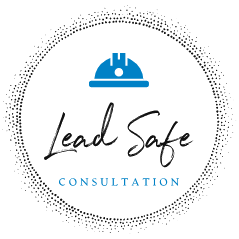Ensuring a safe workplace is not just about having safety protocols in place, it’s about actively engaging with your organization’s Health, Safety, and Environmental (HSE) systems. One of the most effective ways to achieve this is through hands-on HSE audits. Unlike traditional assessments, which might rely heavily on theoretical frameworks, hands-on audits provide a practical, real-world approach to identifying risks and implementing solutions. Here’s why hands-on HSE audits are crucial for maintaining a safe, compliant, and productive work environment.
1. Real-Time Identification of Hazards
One of the greatest advantages of hands-on HSE audits is the ability to identify hazards in real time. Whether it’s a piece of equipment malfunctioning, improper storage of chemicals, or an unsafe working practice, hands-on audits allow experts to observe these issues firsthand. Unlike paper-based assessments that might miss nuanced problems, these audits offer immediate insights into unsafe practices and physical conditions in the workplace.
By directly engaging with the environment, auditors can also see how procedures are being implemented on the ground, allowing for a more accurate assessment of potential risks.
2. Improved Risk Mitigation
In an ideal world, all risks would be addressed before an accident occurs. However, risk mitigation in the workplace requires ongoing diligence. Hands-on HSE audits enable companies to take a proactive approach to safety by not only identifying risks but also providing actionable solutions to address them. This is key in minimizing accidents, injuries, and potential environmental damage.
During these audits, HSE experts can recommend modifications to equipment, suggest improved procedures, or implement new controls—all tailored to the unique needs of the organization. Having the audit team physically present allows for deeper, more tailored insights that are more likely to yield practical, lasting solutions.
3. Compliance and Regulatory Assurance
Compliance with HSE standards such as ISO 45001 (occupational health and safety) and ISO 14001 (environmental management) is non-negotiable for businesses striving to meet industry regulations and avoid costly fines. Hands-on HSE audits ensure that your business meets all necessary safety, environmental, and health regulations by identifying areas of non-compliance before they become a legal issue.
By having auditors physically examine your operations, you ensure that your systems, procedures, and practices align with international standards. This not only protects the organization from legal ramifications but also fosters a culture of safety that resonates with employees, clients, and stakeholders.
4. Engaging and Training Employees
Hands-on HSE audits are not just about finding risks—they’re also about involving employees in the process. When auditors engage with workers, it provides a valuable opportunity for education and awareness. Employees can ask questions, seek clarification, and gain a deeper understanding of safety protocols.
Moreover, hands-on audits often lead to greater engagement from employees as they see the practical implications of safety procedures in their day-to-day operations. This increases overall safety culture within the organization, as employees are more likely to follow protocols when they see them actively being enforced and applied.
5. Continuous Improvement and Monitoring
Safety isn’t a one-time initiative. It’s an ongoing process of improvement and monitoring. Hands-on audits allow HSE professionals to observe whether corrective actions from previous audits have been implemented effectively. If certain issues persist, auditors can recommend further changes, ensuring that the company is continually evolving toward a safer, more efficient environment.
This ongoing feedback loop helps organizations stay ahead of potential risks and ensures that safety is always a priority.
6. Building a Culture of Safety
Hands-on audits help instill a culture of safety within an organization. When employees witness management and HSE experts actively working to address safety issues in real time, it reinforces the company’s commitment to providing a hazard-free environment.
This kind of approach sends a clear message that safety is not just a box to check, but a core value of the organization. Over time, a safety-oriented culture reduces the likelihood of accidents, improves employee morale, and even boosts productivity as workers feel more secure in their environment.
Conclusion
Hands-on HSE audits are not just a regulatory requirement—they are a vital tool in creating a safe, compliant, and efficient workplace. By directly engaging with your organization’s operations, hands-on audits provide real-time risk identification, enhanced employee involvement, and continuous improvements in safety practices. This active, participatory approach not only ensures compliance with regulations but also creates a culture of safety that benefits your organization in the long run.
If you’re looking to take your workplace safety to the next level, it’s time to consider integrating hands-on HSE audits into your safety strategy. At Lead Safe Consultancy, our team of experts is here to help you implement tailored solutions that fit your unique needs, ensuring a safer, more compliant workplace for years to come.


Leave a Comment